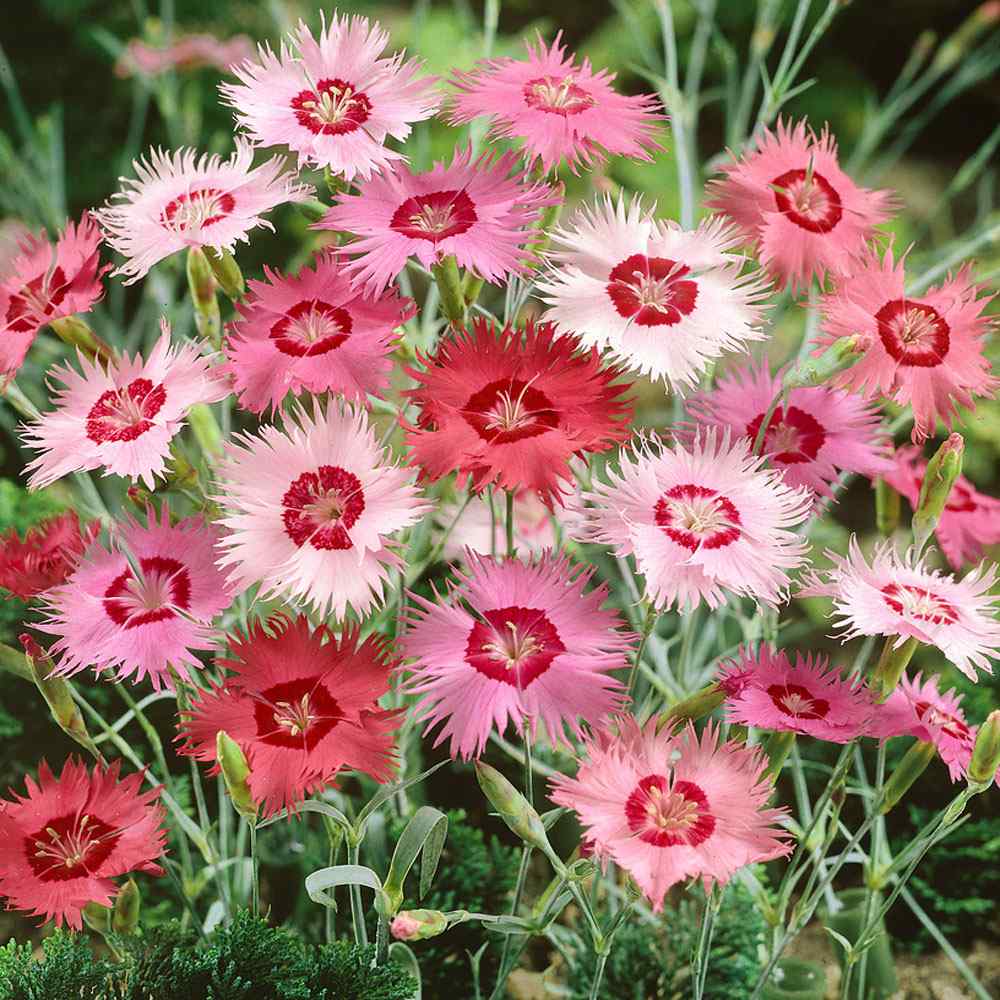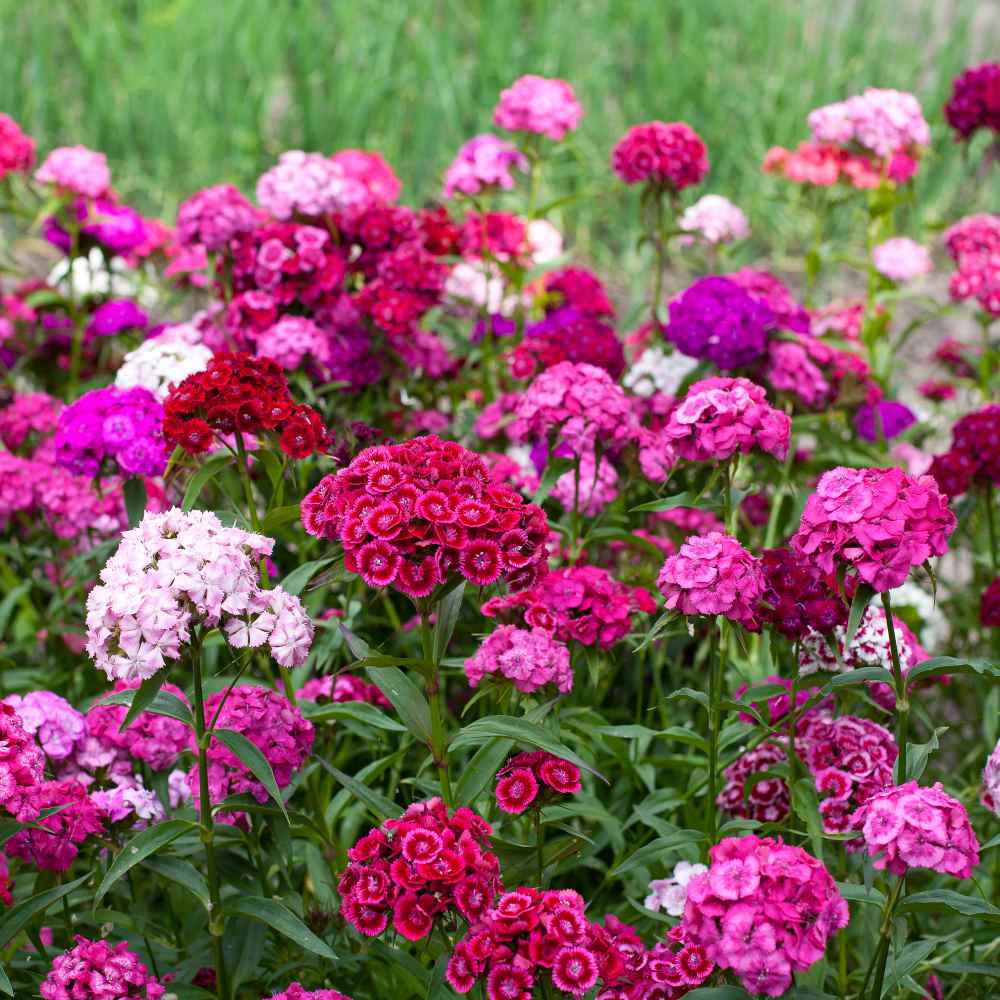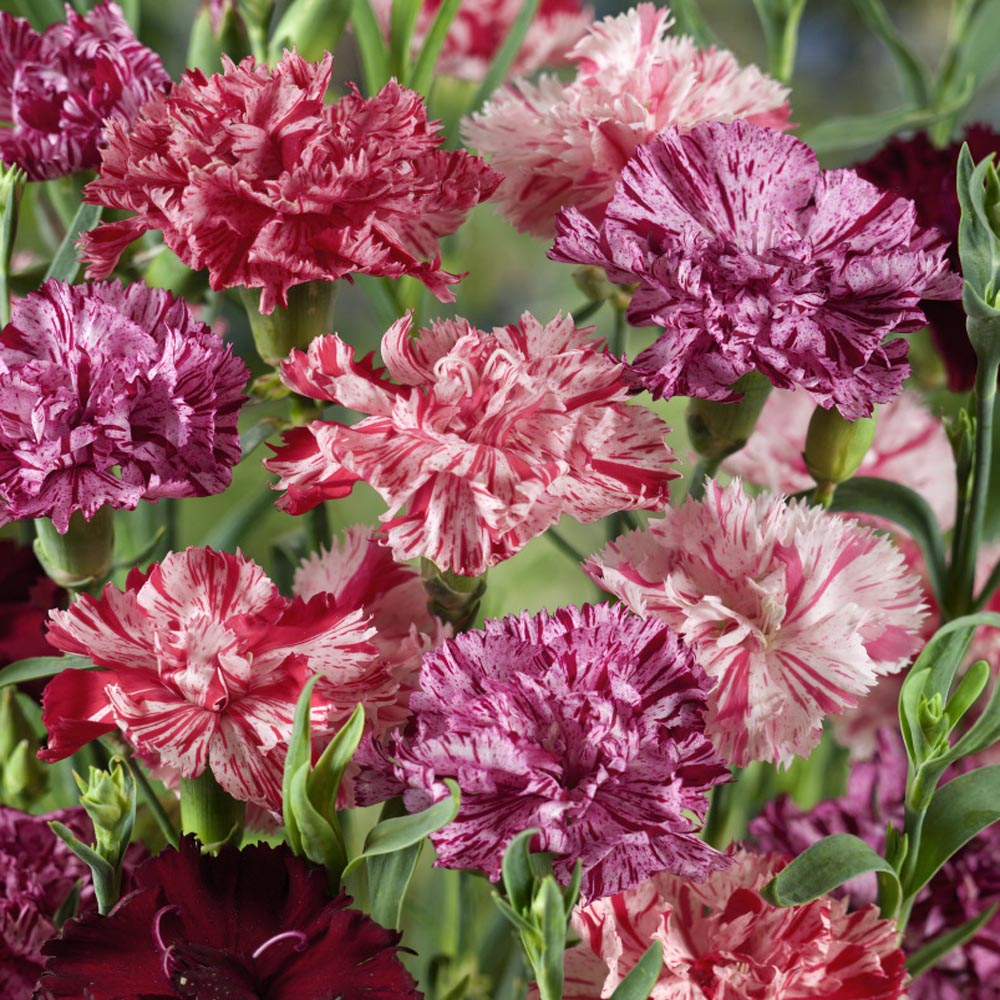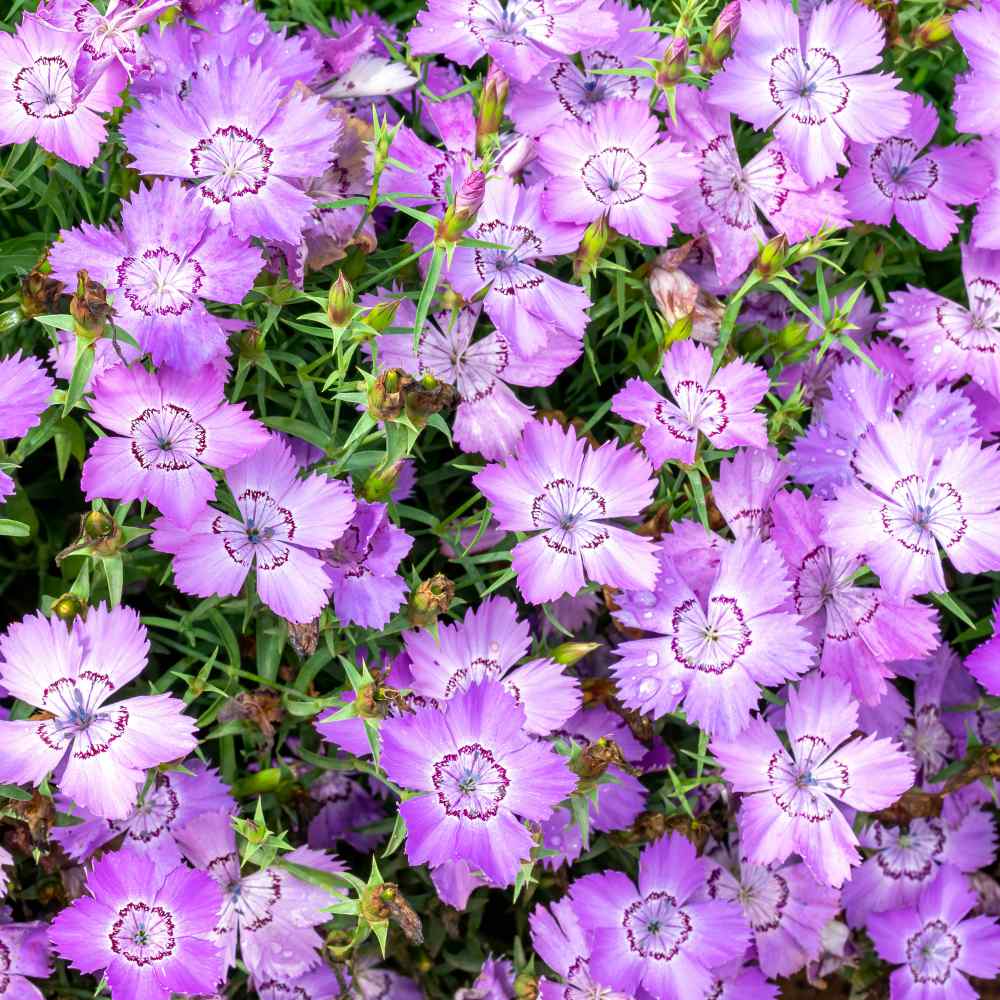
Dianthus Planting and Care Guide
Quick Facts About Dianthus
The Dianthus group includes many species and thousands of cultivars including Sweet William, pinks, maiden pinks and carnations. There is a wide range in colors and a variety in form and sizes, but they are all wonderful performers and often sweetly scented. They attract pollinators like bees and butterflies, and they make wonderful flowers for cutting and have a long vase life.
Planting Time
Starting Dianthus seeds indoors 6 - 8 weeks prior to the end of frost season is the suggested method for the best germination results. However, it's also suggested to transplant out prior to the end of frost season because the plants benefit from cold night time temperatures to help grow a sturdier plant.

Planting Location
Dianthus flowers thrive in full sun, and in moist, rich, well-drained soil that is somewhat on the alkaline side. In the hotter climates, the flowers would benefit from sun in the morning and afternoon shade.
How to Plant Dianthus
- Fill trays with moistened seed starting soil
- Press the Dainthus seeds into the soil and cover very lightly
- Mist the surface well to moisten the seeds and soil
- Loosely cover the tray with clear plastic wrap to help hold in warmth and moisture
- Maintain a temperature of about 70F for fastest germination
- Lift the plastic daily to re-moisten the surface of the soil and seeds
- When seedlings emerge, remove the plastic
- Place the tray in a sunny window or under grow lights
- Water from the bottom and fertilize with water-soluble fertilizer from day 10 of seedling growth and then every 2 weeks until transplanting
- To promote a bushier plant, the growing tips on the seedlings can be pinched out (once the seedlings are 2 - 3 inches tall)
- Harden off the plants for 7 - 10 days prior to transplanting out
- Night time cool temperatures promote sturdier stems and better blooming

Care And Maintenance
- Once the plants are established, water only during dry periods
- Deadhead the spent blooms to encourage re-blooming
- Many varieties will self-sow, leaving a few flowers behind to go to seed will make the annuals seem like perennials
- Add a slow-release fertilizer at the time of transplanting, or use a balanced liquid fertilizer each month
- Give the plants adequate spacing to allow for air movement
- Watch for damage from slugs and snails
- Remove any plant that shows signs of disease
- For winter survival, lightly mulch over the roots as Dianthus plants are fairly shallow-rooted




































